Home » Firearms and Shooting » H.W Cooey Machine & Arms Company: An Iconic Canadian Firearm Company
H.W Cooey Machine & Arms Company: An Iconic Canadian Firearm Company
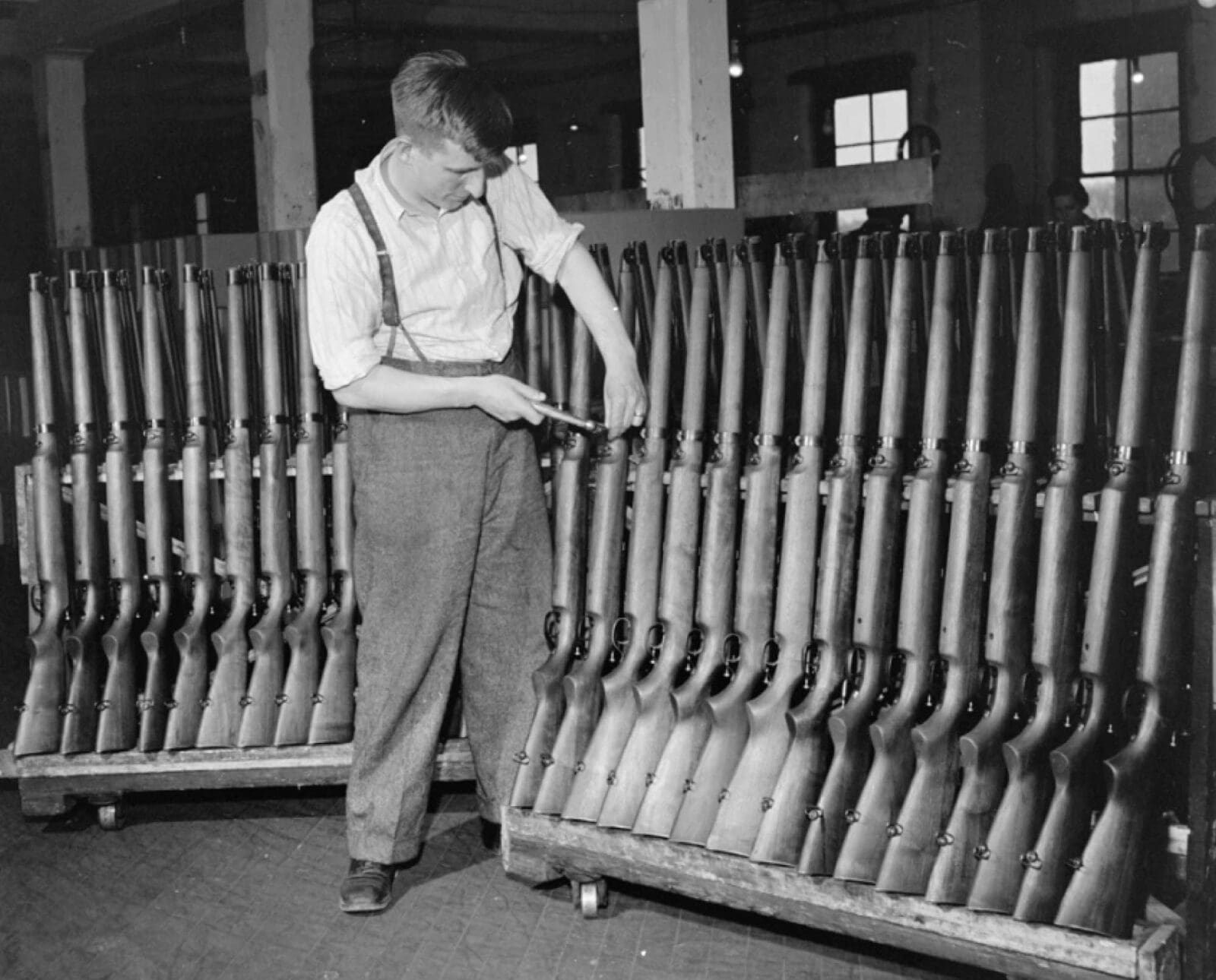
Craig Mitchell is an Outdoor Education Teacher from Toronto, Canada…
Cooey rifles became a Canadian household name because of their simplicity, reliability, and affordability.
Many countries are home to iconic and world-renowned firearms manufacturers. Inventors and engineers like Bartolomeo Beretta of Italy, Samuel Colt of the US, and William Anson and John Deeley of Great Britain are just a few examples. These are names that are synonymous with innovation, craftsmanship, and quality. Despite Canada’s notoriety as a country with restrictive firearm laws, Canada is not without its own iconic firearm manufacturer.
Listen to more articles on Apple | Google | Spotify | Audible
H.W. Cooey Machine & Arms was founded in 1903 as Cooey Machine & Gear by inventor Hebert William Cooey. Cooey Firearms may not be known for high-quality finishings, elaborate engravings, or prestige like Purdy, Holland & Holland, or Beretta, but they are simple, reliable, and affordable. This reputation made them a household name in Canada. Cooey produced over 12,000,000 firearms during the 20th century. An advertisement for the Cooey Canuck, which appeared in an early edition of Rod & Gun Canada, perhaps best described a Cooey rifle as “The ideal Christmas present for the red-blooded boy, whether he lives in the city, the town or the country.” If you were a kid growing up in Canada between the 1930s and 1980s, chances are you grew up shooting a Cooey rifle.
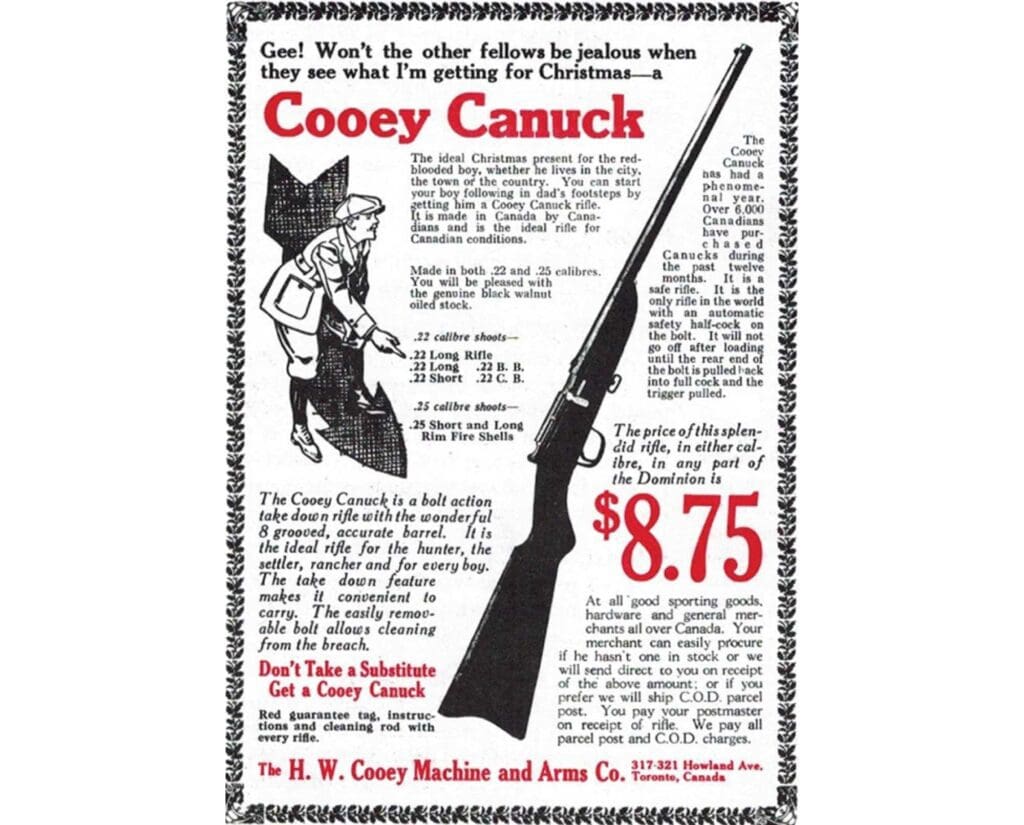
Origins of H.W. Cooey Machine & Arms
Herbert William (H.W.) Cooey was born in Toronto, Canada, in 1881. At 15, he began a three-year apprenticeship with the Grand Turk Railroad. Before his contract was up, he left and traveled to Cleveland, Ohio, to meet his brother to take up a job working on a factory assembly line. This negative experience left a lasting impression on the young industrialist; he found the working conditions and treatment of the factory employees so appalling that it influenced how he ran his own company and treated his future employees.
In 1903, Cooey was confident enough with his skillset to venture out on his own as a “Mechanical Expert and Practicing Machinist. He opened a shop in the heart of Toronto named “Cooey Machine and Gear.” As his talents and reputation grew, so did the demand for his services as a machinist and inventor. Eventually, Cooey moved to a larger facility where he bidded on government contracts to assist the war effort. Cooey Machine and Gear won the bid to produce flip-up sites for Canada’s primary service rifle during the First World War: the Mark III Ross Rifle. This initial experience with the firearms industry sparked Cooey’s interest in firearm manufacturing. He realized he could do more than just produce parts; he could design firearms.
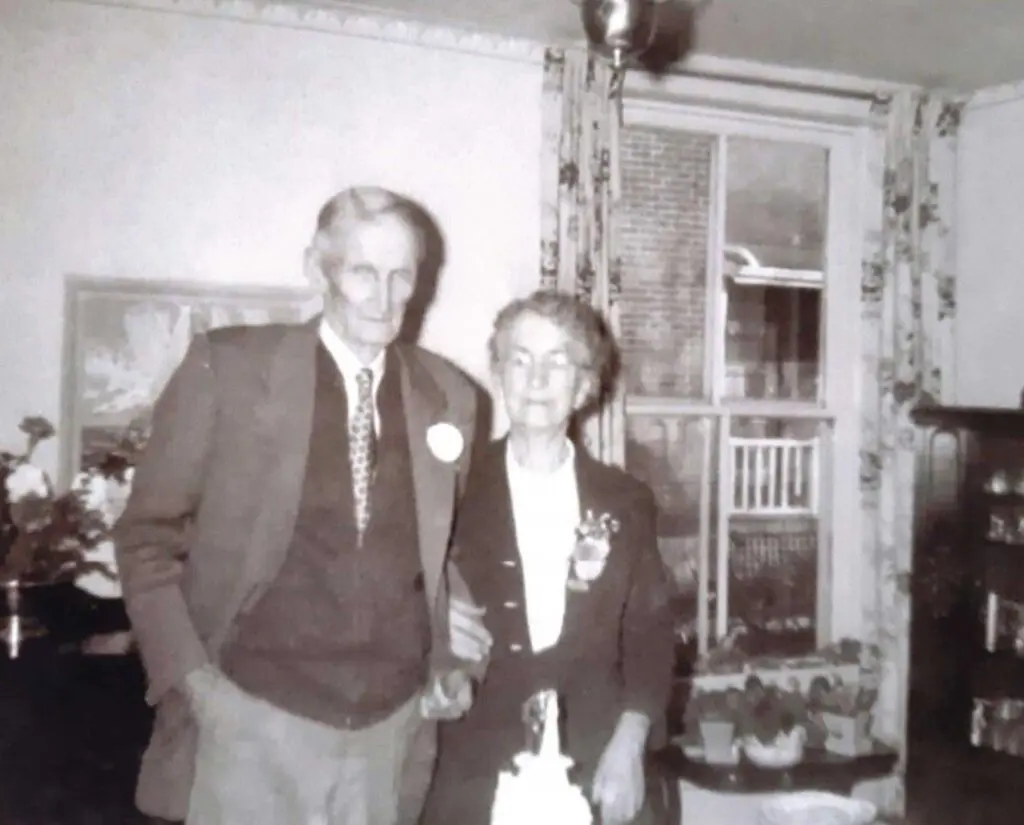
In 1919, Cooey Machine and Gear unveiled the Canuck, its first iconic firearm, chambered in .22 caliber. It was a single-shot, utilitarian rifle that was reliable, accurate, and cheap. This rifle was mass-produced under many names, including the “Ace,” “Eatonia,” “Model 39,” and “Model 75,” as the rifle was licensed under contracts to many major Canadian retailers like Sears and Eaton’s.
The Canuck single-shot .22 was frequently advertised as a great youth firearm, a “boy’s rifle,” because it was tough, very safe, and almost impossible to fire accidentally. Innovative for the time, what made it so safe was not only that it was a single shot, but even when loaded, the shooter was required to pull back a cocking handle at the rear to make it operable. When the round is chambered and the bolt is locked into place, it only half-cocks the rifle. Even loaded and chambered, the gun would not shoot unless the striker was manually cocked. This was a terrific safety feature for a young, first-time shooter.
Cooey Firearm’s Rise to Fame
A Cooey advertisement from 1922 boasts, “Over 6,000 Canadians have purchased Canucks during the past 12 months.” Major Canadian retailers like the T. Eaton company distributed Cooeys across the country. It quickly became evident that he needed bigger manufacturing facilities to accommodate the increased demand for Cooey firearms. A factory in Cobourg, Ontario, became the new home for H.W. Cooey Machine and Arms Co until the 1970s when it expanded to a bigger facility yet again.
To highlight the strength, power, and ingenuity of countries from around the globe, an exhibition was held in London in 1924. The Great Exhibition of the Works of Industry of All Nations was an opportunity to showcase cultures and industries from around the world. Cooey sought this opportunity for his firearms to be showcased on the world stage, providing himself and the company with the international notoriety they needed to attempt an expansion throughout the British dominion. H.W. Cooey Machine & Gear was featured to a great deal of success and fanfare, and the Cooey Canuck rifle was recognized for its innovation. Cooey won a prestigious gold medal and certificate of honor.
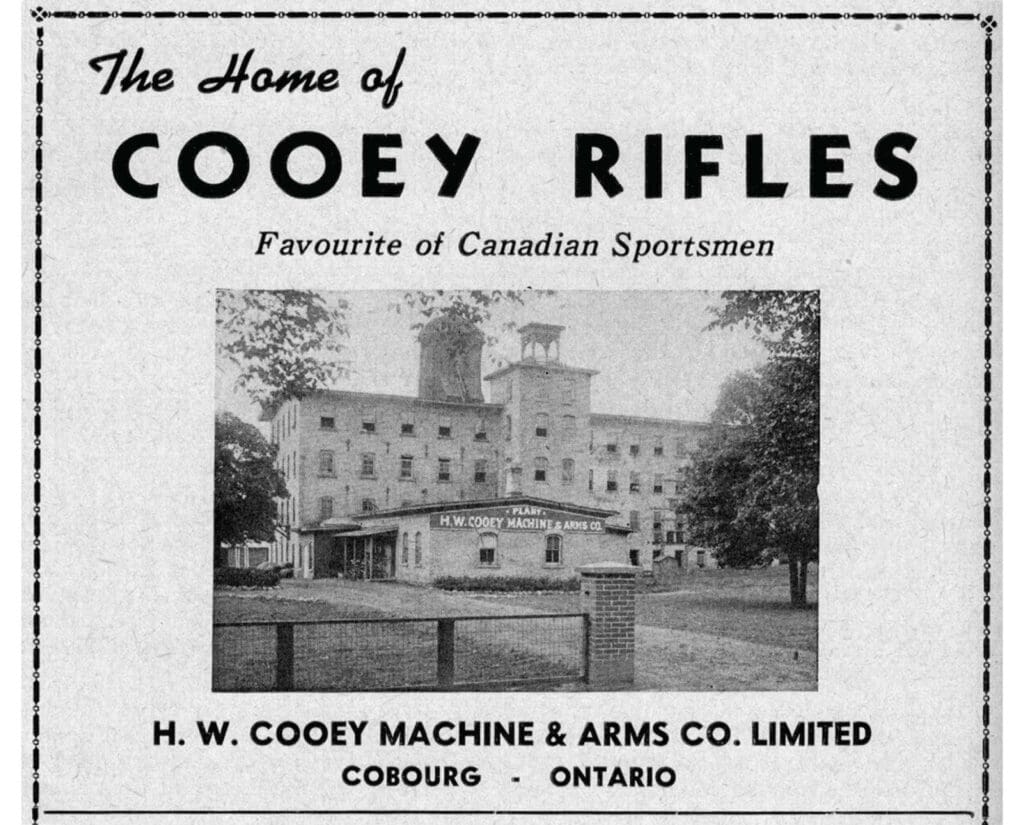
One of the many reasons that H.W Cooey became such an incredible firearms manufacturer and inventor was because he lived and breathed firearms. He not only designed, invented, and manufactured firearms, but he was an Olympic-level shooter in his own right. Cooey supplied the Canadian Olympic shooting teams with firearms and personally represented Canada at the 1924 Olympics in France, taking home a silver medal in trap shooting. With the newfound fame from the exhibition and his Olympic success, the company updated its name to reflect its commitment to sport shooting. They rebranded to Cooey Machine and Arms Co.
After the word spread about Cooey’s quality craftsmanship, many major US firearms manufacturers inquired about whether Cooey could be used to manufacture firearms north of the border to bypass international taxes. Around 1932, Cooey Firearms was contracted out by US firearms manufacturing companies like Iver Johnson Arms and Cycle Works to make their shotguns. H.W Cooey Machine & Arms soon began manufacturing the single barrel “Champion” and the double-barrel “Hercules” shotguns for Iver Johnson & Cycle in their Ontario factory, creating their first non-rimfire rifle. Even though Cooey was making them in their Cobourg, Ontario, facility, they all received the stamp identifying them as Iver Johnson firearms and “Made in Montreal.”
Around 1935, Cooey identified their firearms with model numbers. Previously, they would just be called “Canuck,” “Ace 1, 2, 3,” “Cooey .22 cal,” or “Cooey Special.” The single-shot rifle became the Model 39 and 75, while the .22 repeater became the Model 60. From 1935 to 1939, they also produced the Model 35, a pump action .22. Although the Model 35 was one of the few Cooey firearms known to have reliability issues, it has made it a very valuable collectible firearm today.
In 1937, Herbert, the heart and soul of the company, notified his employees that he was ready to retire. He left the company in the hands of his competent son, Hubert, who resumed responsibility for H.W. Cooey Machine and Arms that same year. In 1939, capitalizing on the success of the Cooey Canuck, Cooey unveiled their newest rifle, a repeating, tube-fed bolt action rifle called the Model 60. It was a rifle that Herbert had designed and finalized before his retirement. Chambered in 22 shot, .22 long, and .22 long rifle, it provided a great deal of interchangeability and an increased rate of fire. The Model 60 was much more complicated because it included a tubular magazine, and when the bolt was cycled, it also cocked the striker simultaneously, unlike the single-shot Model 39.
With the popularity of the Canuck, its subsequent variations like the Ace, and the repeating Model 60, the market for Cooey rifles had grown exponentially within Canada. The majority of Cooey sales originated from Canadian sportsmen and women. However, before the outbreak of World War II, H.W Cooey Machine & Arms had begun to break into the commonwealth market with a few smaller contracts with distributors as far away as Australia.
During the Second World War, Cooey Machine & Arms returned to its roots by assisting the war effort. They made parts and rifles for the Canadian Military and their allies. Over 35,000 Model 82 training rifles chambered in .22 LR were produced as a cost-effective and easier way to train soldiers. The Model 82 was later developed and released for the civilian market in the late 1940s.
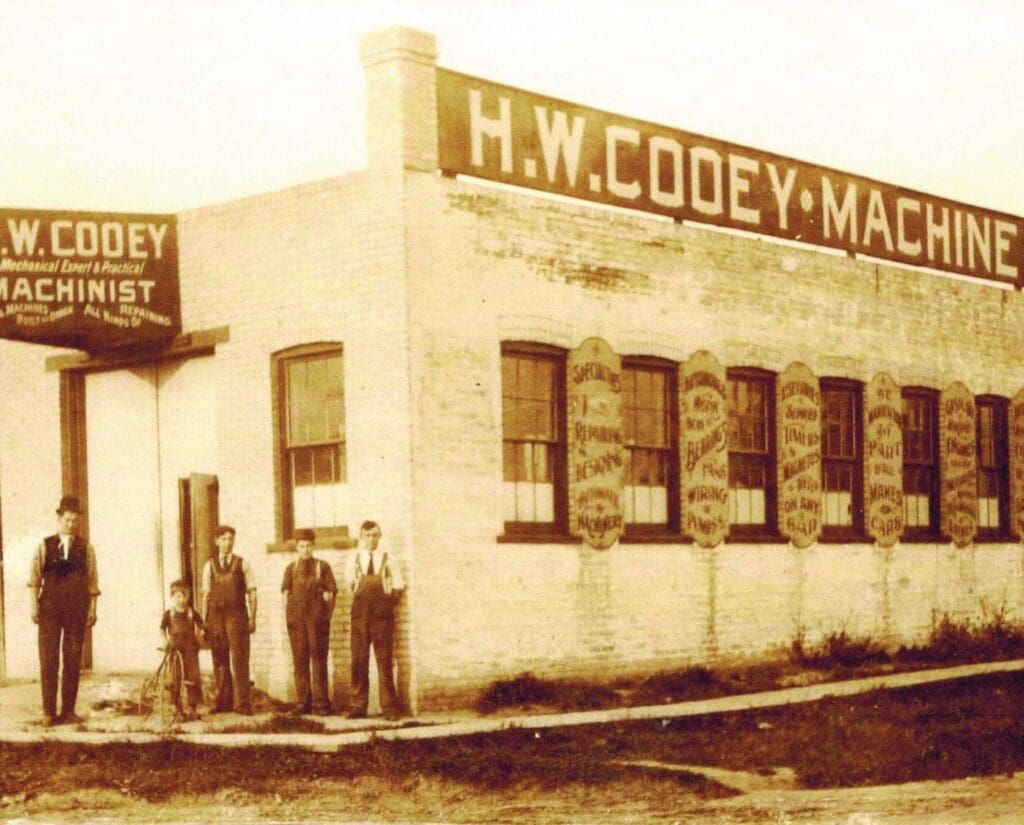
Following the war in 1948, Hubert Cooey decided to break from the company’s tradition of creating only rimfire rifles under the Cooey brand. He began designing an economical, compact, single-shot shotgun produced in various gauges. Transitioning into the relatively new market for shotguns could have been a revelation within the company. But remember, the Cooey family had a long and storied tradition of shotgunning skills and experience manufacturing the Hercules and Champion shotguns for Iver Johnson.
The shotguns were built as utilitarian firearms, perfect for the field or farm. Ian McCollum from Forgotten Weapons commented, “It’s everything that a practical, everyday use, sort of working firearm ought to be.” What makes them unique is that the lever is ambidextrous, breaking either way, and the disassembly of the forend is just spring tension. Both innovations set the shotgun apart from other single-shot shotguns of the time.
Hubert Cooey’s innovations and changes didn’t stop there. By the war’s end, Hubert had led the design and development of entirely new products and services. By 1950, the factory included nine different departments: bluing, buffing, barrels, pressed parts, small parts, automatic screws, automatic assembly, woodshop, and rifling.
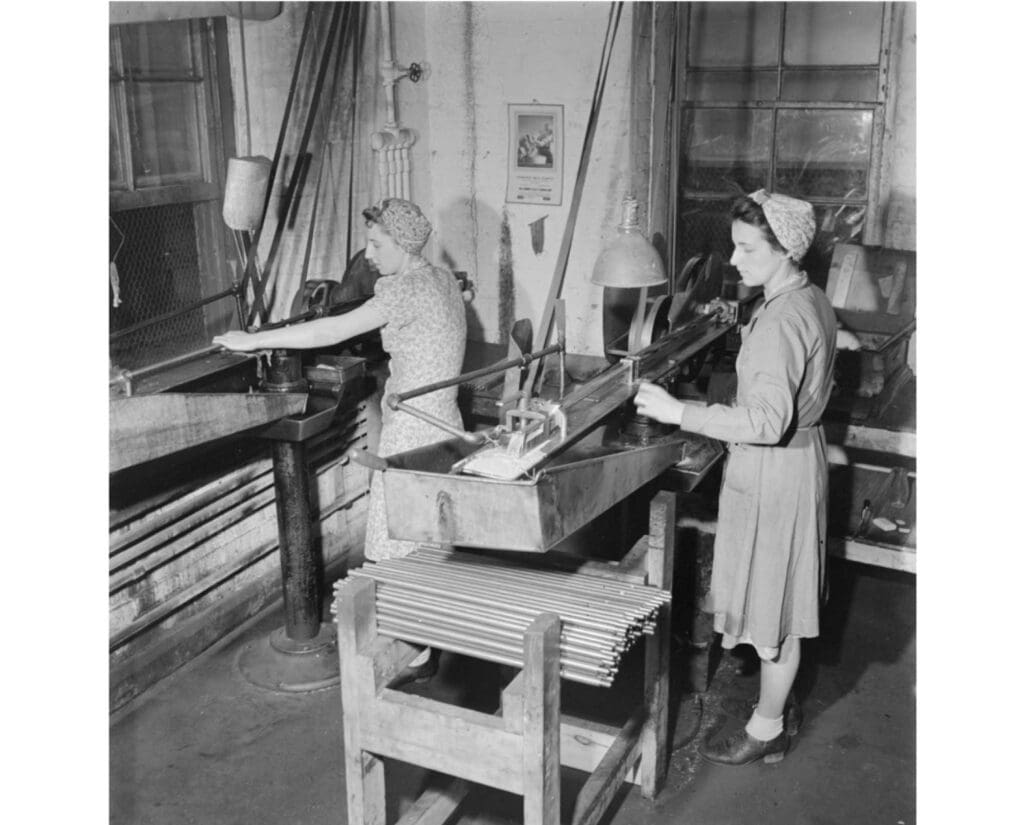
Tragedy Strikes Cooey Machine & Arms
Hubert Cooey died suddenly in 1957. His death left the company without any direction. Hubert’s father, Herbert, came out of retirement and returned to lead Cooey Machine & Arms one last time. Unfortunately, due to his age and the magnitude of the responsibility, Herbert Cooey sold the company to Olin-Mathieson Ltd, making Cooey Machine & Arms a division of Winchester Repeating Arms. This sale occurred shortly before Herbert’s own death.
The last Cooey rifle, the Model 64 under Winchester ownership, was unveiled in 1970. The Model 64 was primarily designed by Hubert Cooey before his death and was released the same year as the Ruger 10/22. The Model 64 was a box-fed semi-auto .22 rifle offered in standard or deluxe finishings. Hubert recognized the need for Cooey to have an affordable semi-automatic offering to compete with other brands like Marlin and Ruger. Even after ten years of being on the Canadian market, this standard rifle still cost under $50.
With the influx of investment money and the popularity of Cooey rifles in Canada, Winchester moved the manufacturing to a bigger and more modern facility fitted with the latest German tooling and machinery. This allowed the company to significantly ramp up production by up to 2,000 firearms per day. Unfortunately, due to higher-than-anticipated costs, labor issues, and changing political climates, the manufacturing plant was finally closed in 1979.
Cooey Firearm’s Canadian Legacy
After the plant closed, the machinery, including parts, tooling, and firearm plans, were sold to Lakeside Arms. Cooey’s workforce also moved north to continue manufacturing firearms for the new owner in their Lakefield, Ontario, factory. Lakeside Arms was then purchased by Savage Arms, who is the current owner. The Cooey 64 remains today in its relatively untouched evolution as the Savage Model 64.
Canada produced over 12,000,000 Cooey firearms in Canada. Many are still being used for target shooting and small game hunting today. Cooey Firearms taught generations of Canadians how to shoot; in fact, during the Great Depression, it was a Cooey rifle that helped my grandfather produce a steady supply of small game to feed his family. Despite Canadians’ endearment to the manufacturer and their products, the affordability and commonality of the firearms in Canada sprung a joke amongst enthusiasts, “My buddy is a Cooey collector and has a bunch of really nice examples…some are worth at least 40 bucks!”
The Cooey Ace, a renamed version of the original Canuck rifle, received international notoriety in 1935 after being used to kill a world-record grizzly bear in Slave Lake, Alberta. The bear was shot and killed by Bella Twin, a talented Cree outdoorswoman and trapper, who encountered the massive animal while tending to her trap line. She used her single-shot Cooey Ace chambered in .22 LR to take down the enormous beast. Not only that, but her rifle was in horrible condition: the barrel was attached to the stock using “hockey tape,” the barrel and crown were corroded, and the stock was cracked. Yet, it was still accurate enough to put down the bear.
Bella determined that it would be safer to try and shoot the bear at close range than to hide and risk being mauled. Using her detailed knowledge of animal anatomy, she shot the bear in the head, aiming between the eye and ear where the skull was weakest. She unloaded her remaining seven shells into the massive skull of the downed bear “for insurance.” The world record bear skull, complete with multiple .22 holes, measured in at 16 9/16” long and 9 14/16” wide, making the total score a whopping 26 7/16”. Presumably, it’s the largest animal ever killed with a Cooey rifle.
Craig Mitchell is an Outdoor Education Teacher from Toronto, Canada who spends his free time hunting and fishing in Northern Ontario with his family and Wirehaired Pointing Griffon named Clover. Before becoming a teacher, Craig was a back country guide and grew up camping and fishing. When he’s not on an adventure with his young family or planning his next upland hunt, you’ll find him introducing his inner city students to the great outdoors.




